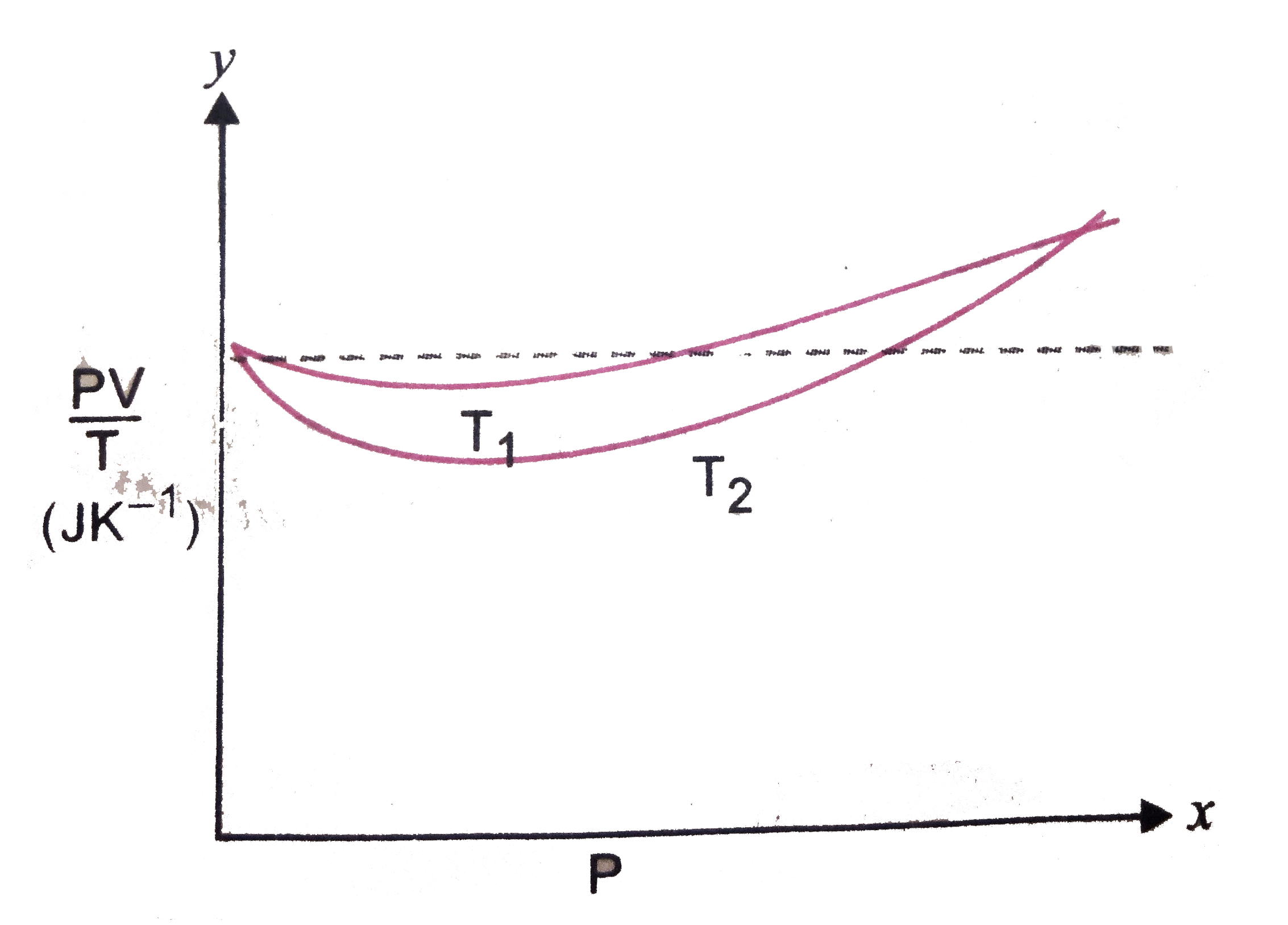Complete Solutions to EXERCISES of chapter KINETIC THEORY of Class 11 book with complete answers and questions
| Class 11 | PHYSICS |
| Chapter | KINETIC THEORY |
| NCERT TAMIL | EXERCISES |
| Number Of Questions | 10 |
| Academic Year | 2023-24 |
Estimate the fraction of molecular volume to the actual volume occupied by oxygen gas at STP. Take the diameter of an oxygen molecule to be `3 Å`.
View SolutionMolar volume is the volume occupied by 1 mole of any (Ideal) gas at standard temperature and pressure (STP , `0^(@) C`, 1 atmospheric pressure). Show that it is 22.4 litres. Take `R = 8.31 J mol^(-1) K^(-1)`.
View SolutionFig shows of `PV//T` versus P for `1.00 xx 10^(-3) kg` of oxygen gas at two different temperatures.
(a) What does the dotted plot signify ?
(b) Which is true : `T_(1) lt T_(2) or T_(2) lt T_(1) ?`
( c) What is the value of `PV//T` where the curves meet on the Y-axis ?
(d) If we obtained similar plot for `1.00 xx 10^(-3) kg` of hydrogen, would we get the same value of `PV//T` at the point where the curves meet on the y-axis ? If not, what mass of hydrogen yield the same value of `PV//T` (for low pressure high temperature region of the plot) ? (Molecular mass of `H = 2.02 u`, of `O = 32.0 u, R = 8.31 J "mol"^(-1) K^(-1)`

View SolutionAn oxygen cylinder of volume 30 litres has an initial gauge pressure of 15 atm. And a temperature of `27^(@)C`. After some oxygen is withdrawn from the cylinder, the gauge pressure drops to 11 atm. And its temperature drops to `17^(@)C`. Estimate the mass of oxygen taken out of the cylinder. `(R = 8.1 J "mole"^(-1) K^(-1)`, molecular mass of `O_(2) = 32 u)`.
View SolutionAn air bubble of volume `1.0 cm^(3)` rises from the bottom of a lake 40 m deep at a temperature of `12^(@) C`. To what volume does it grow when it reaches the surface, which is at a temperature of `35^(@) C`. ? Given `1 atm = 1.01 xx 10^(5) Pa`.
View SolutionEstimate the total number of air molecules (inclusive of oxygen, nitrogen, water vapour and other constituents) in a room of capacity `25.0 m^(3)` at a temperature of `27^(@) C` and 1 atm pressure. (Boltzmann constant `= 1.38 xx 10^(-23) JK^(-1))`.
View SolutionEstimate the average thermal energy of a helium atom at (i) room temperature `(27^(@)C)` (ii) the temperature on the surface of the sun (6000K), (iii) the temperature of 10 million kelvin (the typical core temperature in the case of a star)
View SolutionThree vessel of equal capacity have gases at the same temperature and pressure. The first vessel contains neon (monoatomic), the second contains chlorine (diatomic), and the third contains uranium hexafluoride (polyatomic). Do the vessels contains equal number of respectice molecules ? Is the root mean square speed of molecules the same in the three cases ? If not, which case is `v_(rms)` the largest?
View SolutionAt what temperature is the root mean square speed of an atom in an argon gas cylinder equal to the r.m.s. speed of a helium gas atom at `-20^(@) C` ? (Atomic mass of Ar = 39.9 u, of He = 4.0 u).
View SolutionEstimate the mean free path and collision frequency of a nitrogen molecule in a cylinder containing nitrogen at 2.0 atm and temperature `17^(@)C`. Take the radius of a nitrogen molecule to be roughly 1.0Å. Compare the collision time with the time molecule moves freely between two successive collision `(M of N_(2)=28)`
View Solution
EXERCISES questions and complete solutions for chapter KINETIC THEORY of FULL MARKS PHYSICS(TAMIL) of Class 11